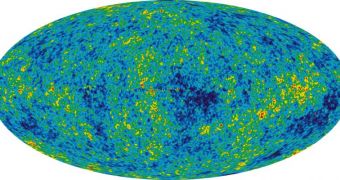Scientists have been trying for a very long time to come to terms with some of the most basic properties of the Universe. In spite of the term “basic,” they are actually fairly difficult to discover, and so a group of experts is currently proposing a new way of approaching this issue. According to Raphael Bousso, from the University of California in Berkeley (UCB) and Roni Harnik at the Stanford University, the answer to some of the most simple questions about the Cosmos can be found by analyzing the origins of the complexity that permeates the entire world, Technology Review reports.
One possible way to explain the laws of physics is the anthropic principle. Basically, it states that all natural laws are remarkably well-tuned to allow for the existence of life. Some go as far as to say that these universal laws look the way they do because otherwise we wouldn't be able to see them. The issue with this approach, critics say, is that it places too much emphasis on us. That is to say, the principle holds that what a bunch of carbon-based life forms on an insignificant corner of the Universe can or cannot do influences the grand scheme of things. This is obviously happy wishing, critics add.
What Bousso and Harnik are trying to do with their proposal is to find a more objective method of explaining the laws of nature, which indeed seem to be very well constructed to allow for life to exist. The two have discovered that the increase in entropy in any selected part of the Universe can be directly correlated to an increase in complexity at the same location. They therefore suggest that the anthropic principle can be replaced with the entropic one, which would make more sense. In a new study they wrote, the researchers analyze theoretically an “average Universe.”
Such a structure is described as having reached a medium degree of complexity, to the point where intelligent observers evolved to witness its natural laws. “Typical observers find themselves in a flat Universe, at the onset of vacuum domination, surrounded by a recently produced bath of relativistic quanta. These quanta are neither very dilute nor condensed, and thus appear as a roughly thermal background,” Bousso and Harnik reveal. Their proposals are striking because they remind us of our Universe. We also live in a seemingly-flat space, and are surrounded by the Cosmic Microwave Background (CMB), the remnant radiation from the Big Bang, the cosmic event that blew everything into existence.
One of the main reasons we may see more of this idea as time passes is the fact that the two physicists capture the state of the Universe (and provide a good explanation for it) with a great deal of elegance. In essence, however, this principle too has about the same type of circular reasoning inside it as the other one. It states that, if the Universe were different, then the level of complexity observers need to have to be able to see it would not have appeared.

 14 DAY TRIAL //
14 DAY TRIAL //